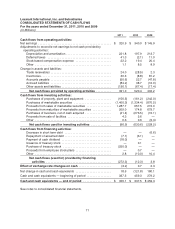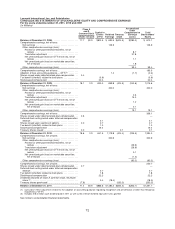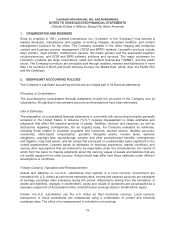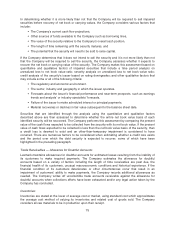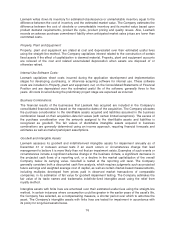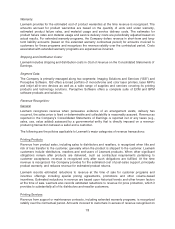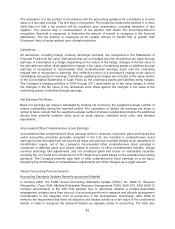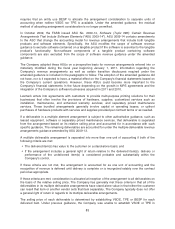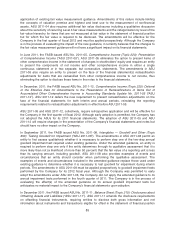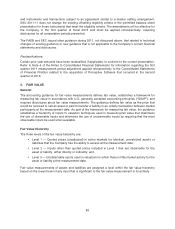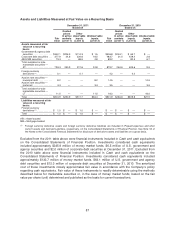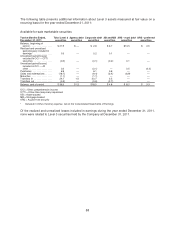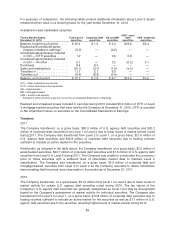Lexmark 2011 Annual Report Download - page 84
Download and view the complete annual report
Please find page 84 of the 2011 Lexmark annual report below. You can navigate through the pages in the report by either clicking on the pages listed below, or by using the keyword search tool below to find specific information within the annual report.The discount rate assumption for the pension and other postretirement benefit plan liabilities reflects
the rates at which the benefits could effectively be settled and are based on current investment yields
of high-quality fixed-income investments. The Company uses a yield-curve approach to determine the
assumed discount rate based on the timing of the cash flows of the expected future benefit payments.
This approach matches the plan’s cash flows to that of a yield curve that provides the equivalent yields
on zero-coupon corporate bonds for each maturity.
The Company’s assumed long-term rate of return on plan assets is based on long-term historical
actual return information, the mix of investments that comprise plan assets, and future estimates of
long-term investment returns by reference to external sources. The Company also includes an
additional return for active management, when appropriate, and deducts various expenses. Differences
between actual and expected asset returns on equity and high yield investments are recognized in the
calculation of net periodic benefit cost over five years.
The rate of compensation increase is determined by the Company based upon its long-term plans for
such increases. This assumption is no longer applicable to the U.S. and certain non-U.S. pension
plans due to benefit accrual freezes. Unrecognized actuarial gains and losses that fall outside the “10%
corridor” are amortized on a straight-line basis over the remaining estimated service period of active
participants. The Company has elected to continue using the average remaining service period over
which to amortize the unrecognized actuarial gains and losses on the frozen U.S. plan.
The Company’s funding policy for its pension plans is to fund the minimum amounts according to the
regulatory requirements under which the plans operate. From time to time, the Company may choose
to fund amounts in excess of the minimum for various reasons.
The Company accrues for the cost of providing postretirement benefits such as medical and life
insurance coverage over the remaining estimated service period of participants. These benefits are
funded by the Company when paid.
The accounting guidance for employers’ defined benefit pension and other postretirement plans
requires recognition of the funded status of a benefit plan in the statement of financial position and
recognition in other comprehensive earnings of certain gains and losses that arise during the period,
but are deferred under pension accounting rules.
Stock-Based Compensation:
Share-based payments to employees, including grants of stock options, are recognized in the financial
statements based on their grant date fair value. The fair value of the Company’s stock-based awards,
less estimated forfeitures, is amortized over the awards’ vesting periods on a straight-line basis if the
awards have a service condition only. For awards that contain a performance condition, the fair value
of these stock-based awards, less estimated forfeitures, is amortized over the awards’ vesting periods
using the graded vesting method of expense attribution.
The fair value of each stock option award on the grant date was estimated using the Black-Scholes
option-pricing model with the following assumptions: expected dividend yield, expected stock price
volatility, weighted average risk-free interest rate and weighted average expected life of the options.
Under the accounting guidance on share-based payment, the Company’s expected volatility
assumption used in the Black-Scholes option-pricing model was based exclusively on historical
volatility and the expected life assumption was established based upon an analysis of historical option
exercise behavior. The risk-free interest rate used in the Black-Scholes model was based on the
implied yield currently available on U.S. Treasury zero-coupon issues with a remaining term equal to
the Company’s expected term assumption. The fair value of each restricted stock unit (“RSU”) award
and deferred stock unit (“DSU”) award was calculated using the closing price of the Company’s stock
80



